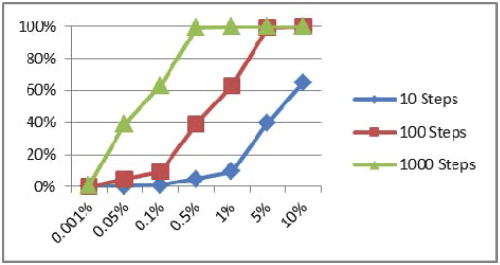Authors
Raymond R. Panko
Abstract
Research has long shown that spreadsheet developers are 96% to 99% accurate when they enter information into spreadsheet cells. For large spreadsheets, unfortunately, a cell error rate of 1% to 6% will almost certainly lead to incorrect results.
Can cell error rates (CERs) really be this high? General human error research has shown that when humans do simple but nontrivial cognitive tasks, they inevitably have comparable error rates. The problem is that human cognitive mechanisms have evolved to "gamble" in a way that will be correct nearly all of the time but that will fail a few percent of the time. Furthermore, our brain hides its inaccuracy from us, leaving us to believe strongly in the correctness of our work despite the presence of errors.
This paper looks at cognitive science aspects of spreadsheet error commission. A subsequent paper will look at spreadsheet error detection.
Sample

The probability of an error for different cell error rates and calculation steps quickly approaches 100%. Even for a low cell error rate and a moderate number of cells, a spreadsheet is almost certain to contain at least one error.
Publication
2013, 46th Hawaii International Conference on System Sciences, January, pages 4013-4022
